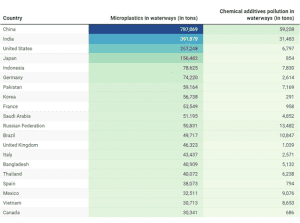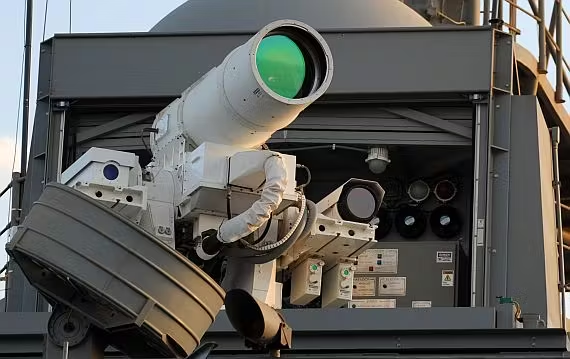TAG: GS 3: ECOLOGY AND ENVIRONMENT
THE CONTEXT: Recent reports indicate that India is poised to become one of the top contributors to microplastic pollution in waterbodies, following China.
EXPLANATION:
- A new report predicts that by the end of 2024, a staggering 3,153,813 tonnes of microplastics will be released into the world’s waterways, with India accounting for a significant portion of this pollution.
- Microplastics not only pollute the environment but also carry chemical additives that accumulate in waterbodies, posing serious health risks.
- These additives, including heavy metals, flame retardants, and substances like bisphenol A, are known to cause neurotoxicity, inflammation, metabolic disorders, and cancer.
- The concentration of these additives in waterways further exacerbates the toxicity levels, impacting aquatic life and potentially human h

India’s Contribution to Microplastics and Chemical Additives:
- India’s escalating contribution to microplastic pollution is underscored by the release of 391,879 tonnes of microplastics, making it the second-largest polluter after China.
- Additionally, India is projected to release 31,483 tonnes of chemical additives from microplastics into waterbodies, further exacerbating environmental degradation and health risks.
Policy Responses and Initiatives:
- In response to the growing concern over microplastic pollution, India has initiated efforts to address the issue at both national and international levels.
- Ban on Single-Use Plastics: India has imposed bans on certain single-use plastic items like plates, cups, and polystyrene (Thermocol) to reduce plastic waste and microplastic pollution. Despite these bans, enforcement challenges persist, leading to the continued presence of banned items in the market. The Plastic Waste Management Rule was also amended to regulate the thickness of plastic carry bags, aiming to reduce their breakdown into microplastics.
- Extended Producer Responsibility (EPR): India has adopted an EPR approach, where producers are held responsible for managing the waste generated by their products. This strategy incentivizes waste prevention, promotes eco-friendly product design, and supports recycling and materials management goals. The Central Pollution Control Board (CPCB) has played a crucial role in formulating and implementing these initiatives.
- Un-Plastic Collective (UPC): The Un-Plastic Collective, a voluntary initiative launched by UNEP-India, Confederation of Indian Industry, and WWF-India, aims to minimize the negative impacts of plastics on the environment and society. This collective seeks to address the ecological and social health implications of plastic pollution.
- At the Intergovernmental Negotiating Committee (INC-4), India emphasized the importance of scientific and technical innovation to prevent plastic release into waterways.
- Furthermore, India advocated for the inclusion of extended producer responsibility (EPR) mechanisms in domestic waste management programs to tackle plastic pollution at its source.
Micro-plastics:
- Micro-plastics are very small (generally less than 5 millimeters in size) plastic particles that can originate from a variety of sources, such as ingredients in cigarette filters, textile fibers and cleaning or personal care products, and dust from car and truck tires, as well as from larger plastic products broken down by the effects of the sun, wind and ocean waves.
- There are two types of micro-plastics: “primary” and “secondary” micro-plastics.
- Primary micro-plastics are manufactured to be tiny in order to serve a specific function for example, as an abrasive in a consumer product.
- Secondary micro-plastics come from the breakdown of larger plastic items.
Challenges and Recommendations:
- Despite these efforts, challenges persist in effectively managing plastic waste and curbing microplastic pollution.
- The rise in plastic production and inadequate waste management capacity continue to outpace improvements in recycling and waste management.
- Therefore, the assumption that recycling alone can mitigate the plastics crisis is flawed, necessitating a comprehensive approach that includes reducing plastic production, enhancing waste management infrastructure, and implementing stricter regulations on plastic usage and disposal.




